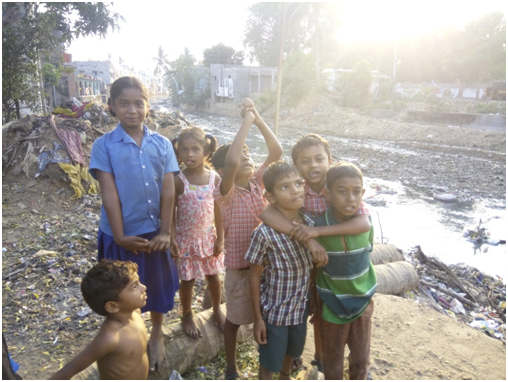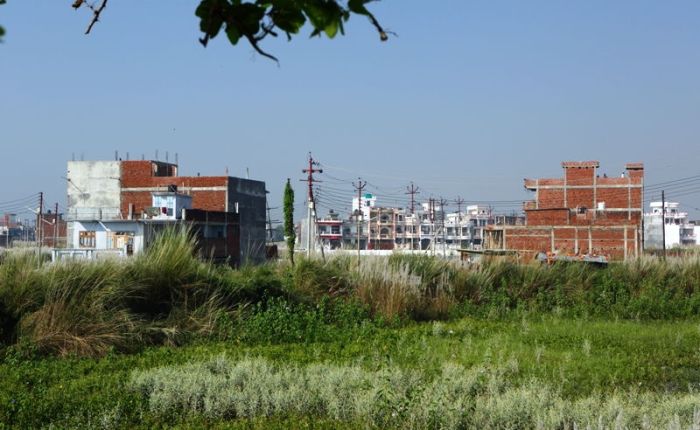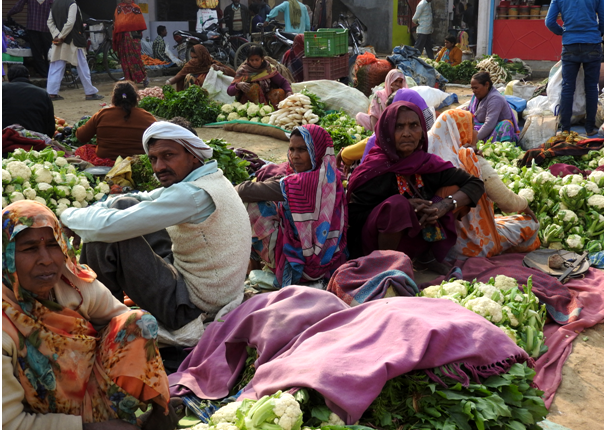Every city depends upon certain core systems to run smoothly and efficiently. Water, sewerage, solid waste management and drainage; without these urban systems, a city would simply collapse. And on these core systems are build the secondary systems that make a city living worthwhile; like public health and sanitation.
What is the status of these urban systems in the city of Patna? Has climate change added to their vulnerability? A quick look at the existing conditions in the capital of Bihar.
Waste galore!
The city generates about 1000 metric tonnes of solid waste per day, but only has the capacity to dispose 65 percent of the total generated solid waste. Which means that an equivalent of more than 30 trucks of garbage are being thrown haphazardly, every single day on the streets of Patna.
The 870 waste collection centres inside the city are acutely insufficient for this populous city of 16.8 lakh people. And so, people simply chuck out all their garbage at any convenient dumping place, more so in open, unused land. Increase in temperature aids its decomposition, and this turns into a messy, soggy spot where the mosquitoes happily breed in. And when it rains, areas get waterlogged, polluting the close by water bodies and the groundwater below.
Waste that is collected through tractors or other open vehicles, spills over into the roads during transportation. The roads remain dirty, smelly and unhygienic. Most of the waste is dumped on to a waste site, about 22 km away from the city, without any form of segregation or treatment. Families that live near this landfill have to deal with the stench, disease conducive environment that takes a toll on their health.
Drained Out…
The city has 460 km of pucca drain, 340 km of kuccha drain and 1200 km of underground drain, which prove inadequate, with the city regularly in the throes of waterlogging. The eastern zone, the old city area is riddled with narrow lanes, a major hindrance in setting up of an effective drainage system. The western zone is dotted with pumping stations which the municipal corporation has installed as a counter measure against the acute waterlogging faced on a regular basis. And many areas in the southern zone are still without any drainage facility whatsoever.
People dump their garbage and debris directly into the drains, which tends to block the flow of water in them, and the filth laden water, simply overflows onto the open land. In many places, the cleaning of the drains is not carried out regularly or the drains being old and decrepit are unable to handle the water content. Many houses have been constructed above these drains, thus obstructing the path of the drained water. Waterlogging, is thus on the rise.
Sewerage
The city has its own underground sewerage system, four sewerage treatment plants and a 24 km long sewer pipeline. But, only 20 percent of the houses in the entire city are connected to the underground sewer and nearly 80 percent of the families use a septic tank and a cost effective toilet which pollutes the underground water. More importantly, the water supply line and the sewerage lines follow the same path. With the passage of time, wear and tear of the pipelines has occurred and water from the sewerage line enters the water supply line, thereby polluting it.
With limited public toilets, increased slum population with inadequate toilet facilities and the migrant population that comes to the city, the present sewerage situation is definitely inadequate.
Drinking water
Patna city depends upon groundwater for its drinking water provisions. 98 tube wells, 190 km pipeline, 30000 public stand posts and around 23000 public hand pumps are there in the city. Inspite of this, water reaches only 60 percent of the house; the bereft 40 percent makes do with shallow pumps.
Besides this, there are other problems too. The water pipelines leak at several places, an invitation to pollution and also causing a loss of nearly 40 percent of a precious resource. Many of the pipes criss-cross the existing roads, and are thus difficult to maintain and repair, affecting their water carrying capacity. Other places they choke and burst, and the drain water pollutes the drinking water in the area.
The quality of the drinking water too is questionable. Every day Patna belches out 224 MLD of sewage, of which half enters the river Ganges, while the other half is left to pollute the groundwater. There are four sewage treatment plants with a capacity of 150 MLD, but only 50 MLD reaches them. Sanitation
Patna ranked at a lowly 746, in a cleanliness survey conducted by the Government of India in 2016. Of the total 1796.23 acres of unplanned land, nearly 12 percent is encroached with haphazard waste management and sewerage services. More than 436 slums in the city face problems of cleanliness facilities, water drainage system and solid waste disposal issues, and more than three lakh people depend on shared public toilets for their primary sanitation need, many of which are in a broken, dilapidated condition.
Presently, there are 105 public toilet complexes connected to the sewerage system, and only 15-20 per cent of the sewage system is covered. Even though sewage is disposed through septic tanks and soak pits in the city, it flows directly from the septic tanks into the open drains and into the rivers during monsoons.
Homes
An expanding Patna is trying to fit in the increased population and regular flow of migrants into the city, and the result is unplanned urbanization and even sabotaging of the flood plain areas and existing wetlands to make place for the increasing populace. Dense settlements, tight streets and cramped, badly ventilated homes are taking a toll on the health of the children. Safety in such packed environment is short-charged more so for the young adolescent girls here.
There are 107 slums in the city and nearly one fourth of the population resides here, most of which are ramshackle places, right next to the drains. Shivpuri, one of the sums is located on the railway land, and has no hand pump for water, and obviously no toilet too. There is no system for waste collection, which simply piles up near the houses here. When the drains are cleaned the muck from the drain is simply dumped in front of the houses, without any thought of health or hygiene.
Ecosystems loss
In the march to urbanization, Patna is fast losing its green cover and existing water bodies. Unchecked dumping of garbage or raw sewage in these water bodies is slowly killing them. As per Master Plan 2030, only one percent of the area is occupied by waterbodies. In Phulwari Sharif, located near the AIIMS in Patna, a 17 acres pond has reduced to mere 3-4 acres. Not only has the size been cut down drastically, but new colonies have sprung up all around this diminishing pond, and the sewage from here is directly flowing into this lost body.
Agricultural land around the city has been taken over by brick kilns. The biodiversity of the peri-urban areas is being affected and the livelihood of the marginal farmers is at stake here.
This is the 3rd blog based on an excerpt from ‘Children-Focused City Resilience Action Strategy for Patna Urban’, a report published by the Gorakhpur Environmental Action Group (GEAG), supported by UNICEF, India.
You may read here the
1st blog ‘Patna diary: How a changing climate is making its presence felt ‘
2nd blog’ Patna diary: A city under stress
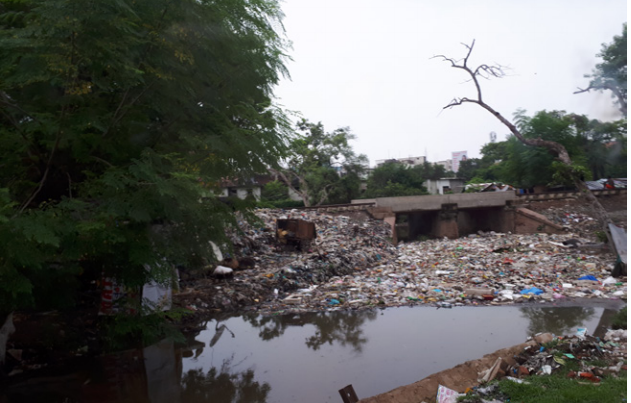
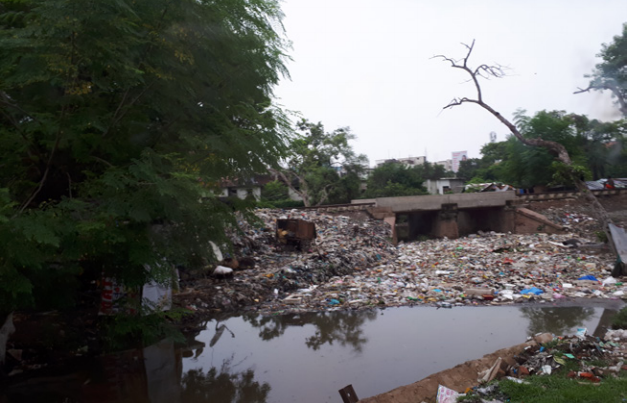

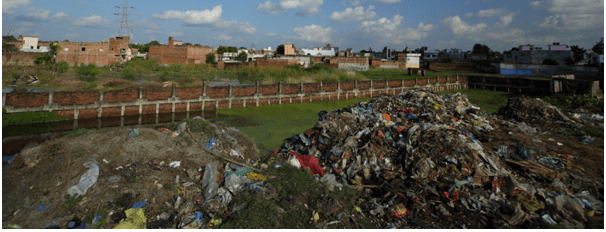
 , even when given as a freebie. And if you are part of an organization, do what we at
, even when given as a freebie. And if you are part of an organization, do what we at 
